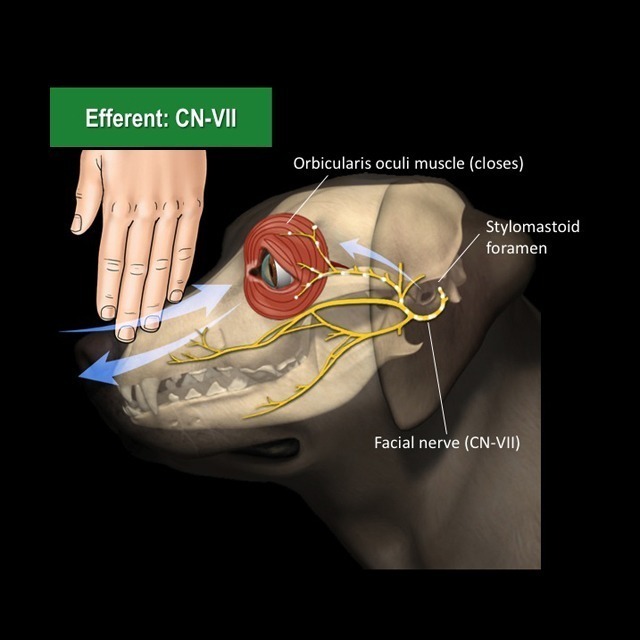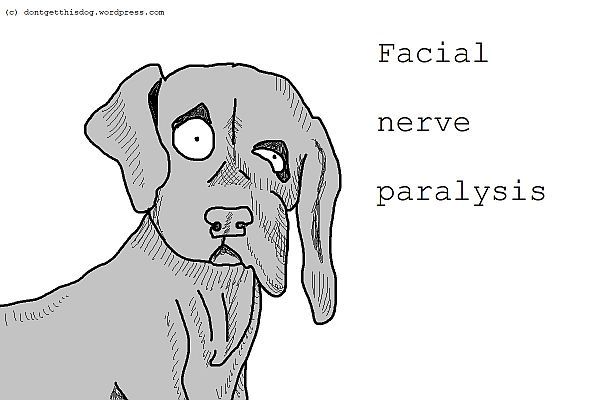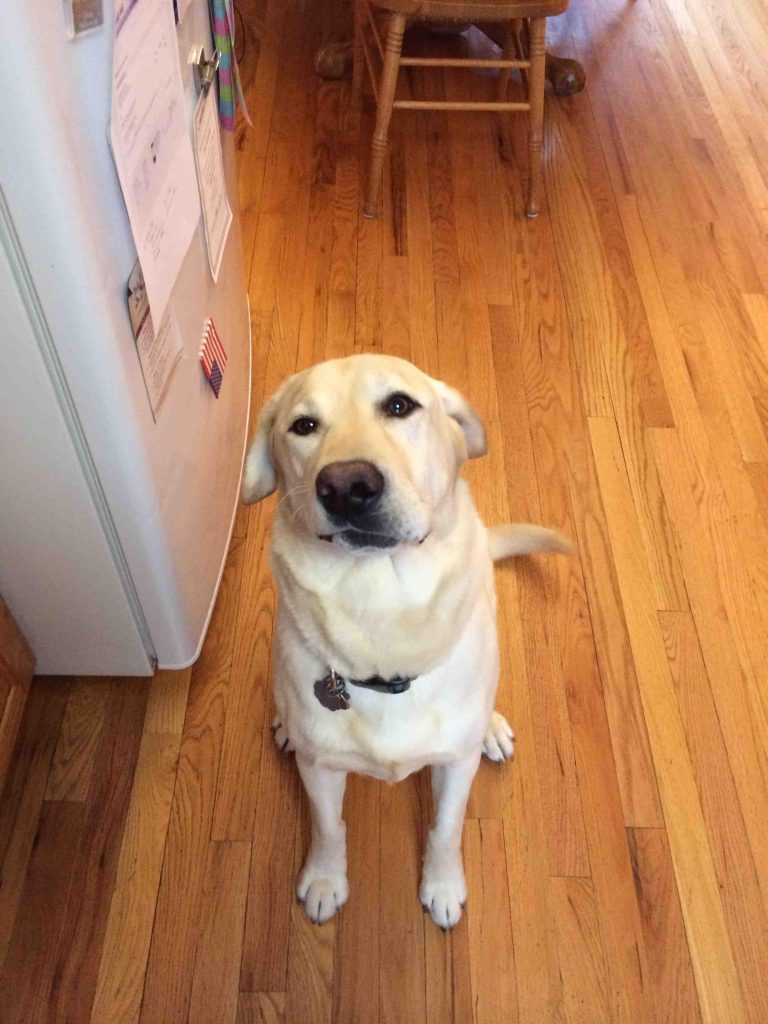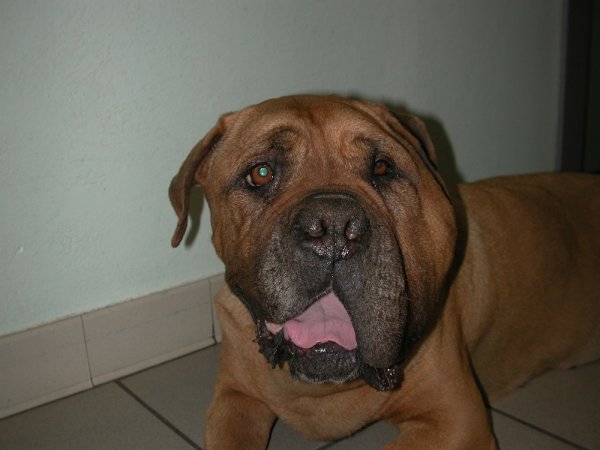The heads of dogs and cats are innervated by twelve pairs of cranial nerves (CN). When CN VII – otherwise known as the facial nerve – is dysfunctional, the result is paralysis of specific facial muscles. This week I’m sharing some information about facial nerve paralysis to increase awareness, so I hope you find the information helpful. Happy reading!

Facial Nerve Paralysis – What is it?
To understand this type of paralysis, one must have a basic understanding of the CN VII, the facial nerve. The nerve is quite complex, composed of different fiber types with unique functions, including providing motor and sensory supply to the following:
- Ear canal (called general somatic efferent)
- Salivary glands, lacrimal/tear glands, nasal cavity, and palate (called general visceral efferent)
- Rostral (aka the most forward part) 2/3 of the tongue (called special visceral afferent)
- Muscles of facial expression like the ears, lips, eyelids, and nostril (called general somatic efferent)

The latter function is the focus of this post. The most common cause of facial nerve paralysis is idiopathic facial nerve paralysis. Idiopathic is medical term that means we don’t currently know what causes it. In humans, a similar condition is called Bell’s Palsy. Other potential causes are:
- Middle and/or inner ear infection
- Polyneuropathy
- Primary brain disease
- Hypothyroidism
It’s important to note all potential causes must be ruled out before one is able to called the paralysis idiopathic.
Facial Nerve Paralysis – What does it look like?
When the muscles of expression are affected, specific clinical signs manifest, particularly:
- Inability to blink
- Drooping of the lips
- Decreased tear production on the affected side

Dogs and cats of any age, sex, and breed may develop this problem. However, some breeds are over-represented, including:
- Domestic longhair cats
- Pembroke Welsh corgis
- American cocker spaniels
- English Setter
It’s interesting to note although the muscles of expression are paralyzed, sensation or feeling in the face is normal.

Facial Nerve Paralysis – How is it diagnosed?
Diagnosis is straightforward and based on appropriate clinical signs like an inability to blink, lip drooping, and findings consistent with “dry eye.” More challenging can be ruling out the potential causes of the paralysis. Veterinarians may recommend a variety of tests, like:
- Sedated ear examination
- Head CT scan and magnetic resonance imaging (MRI) to look at the middle and inner ear
- Screening for hypothyroidism

Facial Nerve Paralysis – How is treated?
There is no specific treatment for idiopathic facial paralysis. Most patients never regain the function of the facial nerve. Thus, intermittent chronic treatment for “dry eye” associated complications (i.e.: corneal ulceration) may be needed. If an underlying cause (i.e.: hypothyroidism) is identified, then appropriate therapy should be initiated.
The take-away message about facial nerve paralysis in dogs & cats…
Facial nerve paralysis is a relatively common neurologic problem in dogs and cats. Paralysis results in an inability to move the facial muscles associated with expression. The vast majority of the time no underlying cause can be identified. Facial paralysis is typically permanent, but affected patients are able to live high quality lives.
To find a board-certified veterinary neurologist, please visit the American College of Veterinary Internal Medicine.
Wishing you wet-nosed kisses,
CriticalCareDVM






